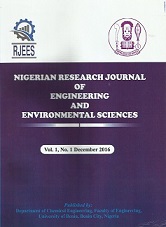Identification of Welding Regime in Powder Melting
Authors: Ayoola WA, Suder WJ, Williams SW
DOI Info: http://doi.org/10.5281/zenodo.5805165
ABSTRACT
Identification of welding regime in powder bed additive manufacturing (AM) is a complex process. This is because in solid melting with homogeneous material where heat conduction is uniform, welding regime can easily be identified. However, in powder melting, heat conduction may vary due to non-homogenous nature of the powder particles, multiple reflection and inconsistence particle-solid plate interaction. This study compared melting behaviour of solid and powder materials when the same interaction parameters and beam diameter were applied. The beam diameters investigated were from 0.10 to 6.00 mm, power density 20.4 - 5350 kW/cm2, and interaction time between 1 - 480 ms. The results indicated that powder melting behaved differently from solid melting. For large beam diameters, layer thickness highly depends on the build height in powder melting and energy density placed significant role on depth of penetration in solid melting. The build height is higher than depth of the penetration. Thus, higher melt area was achieved in powder melting, which indicate efficient utilisation of applied energy. Comparison of solid melting to powder melting with bigger beams and the same interaction parameters showed similar conduction bead profiles. When a small beam was used, conduction bead profile achieved in powder melting spread across conduction, transition and keyhole regimes of solid melting.
Affiliations: Department of Metallurgical and Materials Engineering, University of Lagos, Lagos State, Nigeria.
Keywords: Powder Melting, Power Density, Conduction Welding, Weld Bead Profile, Beam Shapes
Published date: 2021/12/30









